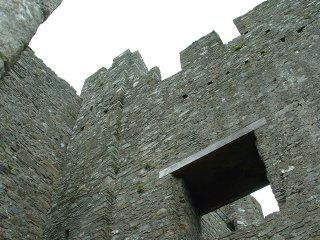The Cistercian Monastery at Newry was established before the arrival of conquering
For a long time the Monastery and town could not be considered separate at all, the former usually being the more influential. Indeed with additional endowments over time, the monks came to own lands stretching into the modern South Down, South Armagh and
Small’s Historical Sketch of Newry (1876) indicates that the Abbey itself comprised an extensive series of buildings stretching along (the modern!)
Part of the Monastery was destroyed by fire in 1162 with the loss of the library and two yew trees ‘said to be planted by S. Patrick’. It was duly restored and its possessions and privileges confirmed by the all-conquering Hugh de Lacy in 1237, Earl of Ulster – through whom the abbot became a ‘mitred prelate’ exercising both civil and ecclesiastic jurisdiction.
In 1306 in a valuation of the dioceses of
Yet in the third reign of Henry IV (1402) one of the monks of the monastery was successfully elected to an office that allowed him to be received among the English.
It was in the middle of the following century (sixteenth) that the dissolution of the monasteries took place under the Tudors. Newry for a time passed to the Bagenals, the first of whom, Nicholas, for a few decades – and just intermittently – lived in the fortified town house that became referred to as the
As this town grew in importance to the English as a stronghold of their northern garrison, the Bagenals played a large part in establishing the ‘modern’ town of
… Cannibalism in Newry …
